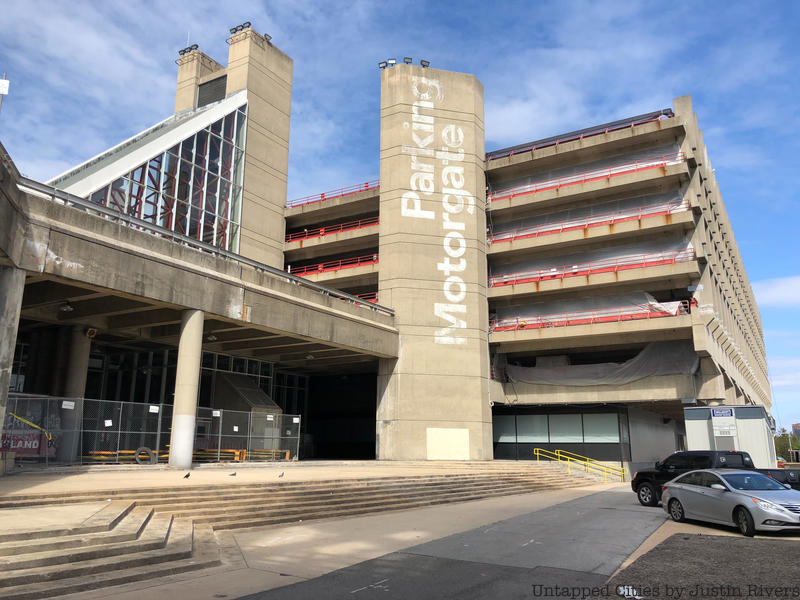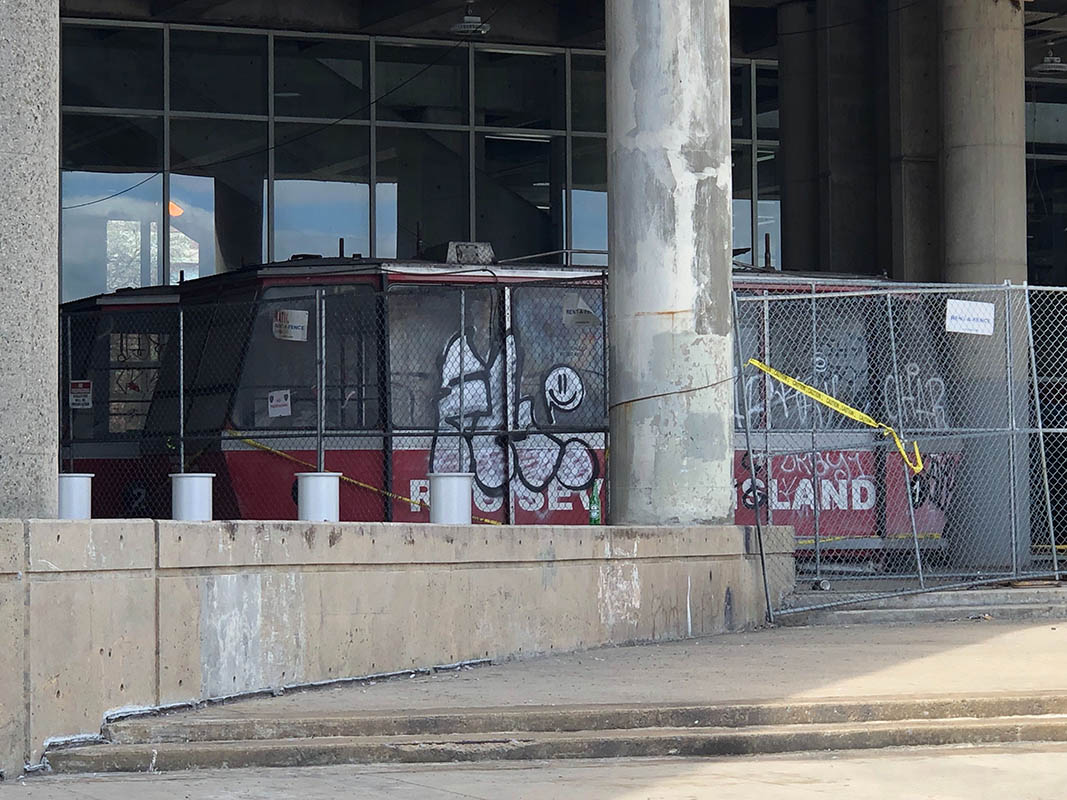The Roosevelt Island tram opened in 1976, with tram cars and system built by the Swiss company Von Roll with American designers Prentice & Chan, Ohlhausen architects, carrying passengers from Manhattan’s East Side onto the island. It was this version of the tram that became an iconic American image, in the 1976 King Kong film, when the ape attacks the tram ride in his path of destruction over Manhattan, and recreated in the popular Universal Studios ride, Kongfrontation. In 2010, the tramway was closed for a complete renovation. Everything from the original build was replaced, including the cars, except for the three tower bases, but we recently came across a great remnant of the system: two abandoned tram cars still left on Roosevelt Island.
The cars, with graffiti on them, are located on the ground floor of the Motorgate parking garage on the north side of Roosevelt Island. This Brutalist structure, designed by Kallmann & McKinnel is a multi-use building, created in 1974 to hold the cars coming to the predominantly car-free island, hosts retail spaces, supermarket, firehouse and post office. The parking garage started to undergo repairs and upgrades earlier this year, which are still ongoing.

The two trams sit behind rental fencing which has been around since at least construction began. The relics, which are owned by the Roosevelt Island Operating Corporation, have sadly become increasingly tagged with graffiti in the last year. Terrence McCauley from RIOC tells us, “We are entertaining a variety of ideas for them and are open to suggestions.” Over the years, they have received over “a whole host of ideas [from] people who want to turn them into art pieces all the way to people who think they might make great retail spaces and everything in between. We don’t know what will happen with them except that we have no intention of selling them or throwing them away. We’re open to ideas on what people think should be done with them, so if your readers have any ideas, send them our way.”
You can come see these trams on a free tour of Roosevelt Island we have programmed to coincide with Archtober, focusing on the legacy of Catalan architect Josep Lluis Sert who created the Eastview and Westview apartment complexes, part of a larger master plan that was never completed. The tour is organized with the collaboration of the Public Diplomacy Council of Catalonia and with the assistance of Mary Ann Newman, Director and Founder of the Farragut Fund for Catalan Culture in the U.S.
Get your ticket to this free tour here:
Tour of Josep Lluís Sert’s Legacy on Roosevelt Island
Next, check out the Top 10 Secrets of Roosevelt Island.






